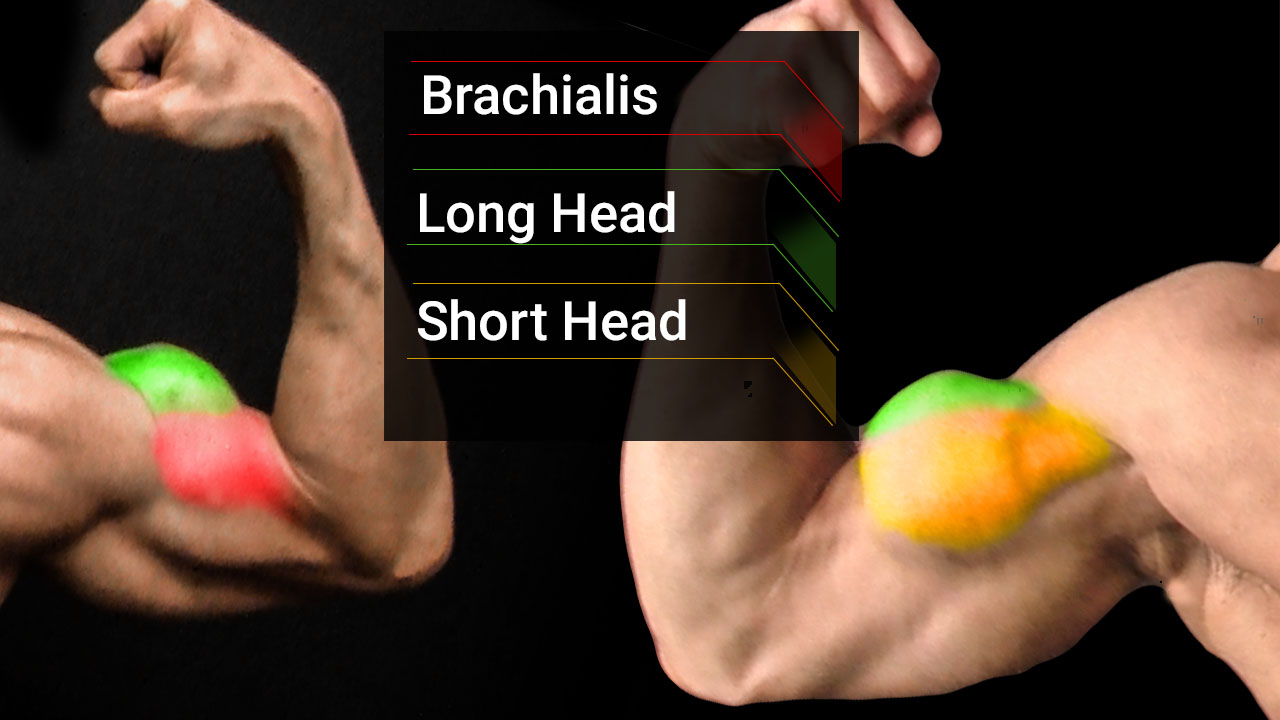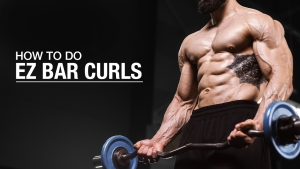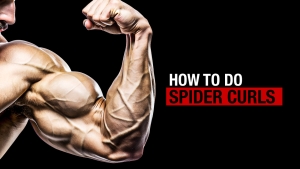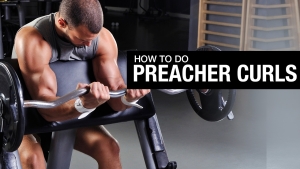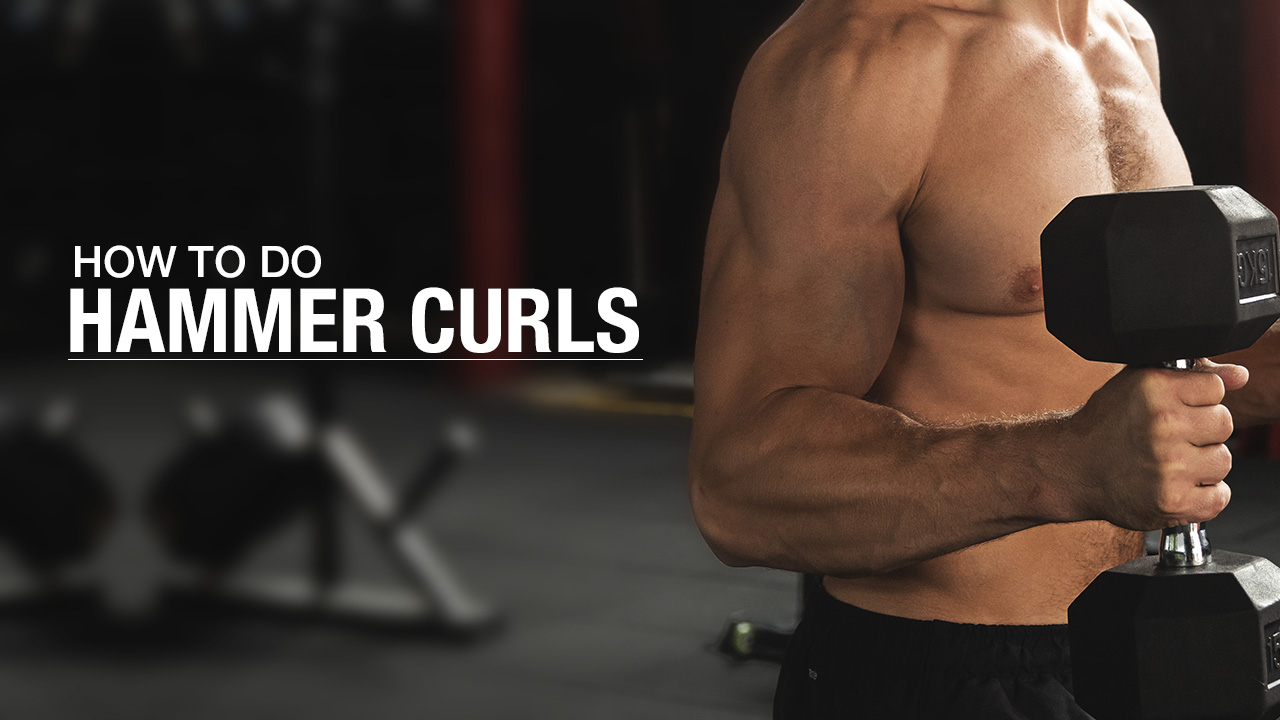
HAMMER CURLS FOR BIGGER STRONGER ARMS
If you’re aiming for bigger, stronger arms, the Hammer Curl should be a key part of your workout routine.
This exercise is perfect for targeting both your biceps and forearm muscles, helping you build balanced and powerful upper arms.
The Hammer Curl, with its neutral position grip, engages the brachioradialis muscle, a major muscle in your forearm, and enhances wrist stability.
In this article, I’ll take an in-depth look at the Hammer Curl.
We’ll explore the anatomy and muscles responsible, such as the biceps brachii and elbow flexors, guide you through the perfect form including starting positions and body positions, and discuss common errors and how to avoid them.
We’ll also dive into various effective variations, like the Crossbody Hammer Curl and the Drop Curl to help you find the best fit for your strength training regimen.
Whether you’re a seasoned lifter or just starting out, mastering the Hammer Curl with proper form and technique will elevate your arm workout, enhancing your curling strength and muscle activation patterns.
This will not only help you achieve impressive results over time but also minimize the risk of injury.
So, grab a pair of dumbbells, adjust your weight accordingly, and let’s get started on this journey to building stronger, more resilient arms.
HAMMER CURLS: MUSCLES TARGETED
As always, it’s important to understand the muscles you’re working on.
Knowing the anatomy is essential for establishing that mind-to-muscle connection, which is key for maximizing your arm training results.
When you can visualize and feel the muscle working during each rep, you can ensure that you’re targeting it effectively and avoiding unnecessary strain on other parts of your body.
This not only helps in building muscle more efficiently but also in preventing injuries and improving overall exercise performance.
With that said, let’s dive into the biceps muscle.
What we commonly refer to as the bicep is actually a two-headed muscle. That’s right, “BI-CEPS” means two heads.
The biceps are responsible for elbow supination (rotating the forearm), elbow flexion (bending the elbow), and shoulder flexion (lifting the arm).
These functions are necessary for various movements and exercises, such as Standard Curls, Dumbbell Hammer Curls, and Traditional Biceps Curls.
BICEPS LONG HEAD


The long head of the biceps is located on the outer part of the biceps. It attaches at the shoulder, which is why it also aids in shoulder flexion.
This head of the biceps is particularly important for adding a peak to your biceps when you flex.
Exercises like Incline Dumbbell Curls can emphasize the long head by putting your arms behind your body, increasing the stretch and activation.
This ensures a fuller range of motion and better muscle growth.
BICEPS SHORT HEAD


On the inner part of your arm, you’ll find the short head of the biceps. This part of the muscle is key for adding thickness to your arms.
The short head is more involved in elbow flexion and plays a role when your arms are positioned in front of your body.
Preacher Curls and Concentration Curls are excellent exercises to target the short head, as they focus on bringing the elbow forward and maximizing contraction.
Proper form is essential to avoid strain on the elbow joint and to ensure effective muscle activation.
BRACHIALIS


The brachialis isn’t technically part of the biceps, but it plays a key role in the overall look of your arms.
This muscle lies beneath the biceps and pushes them up, adding to the arm’s overall width and thickness.
The brachialis is most active when the arm is in a neutral or pronated position, making it a primary target during Hammer Curls and Reverse Curls.
By emphasizing the brachialis, you can create a more balanced and fuller arm appearance.
This muscle’s development is critical for achieving that head-on arm thickness that completes the aesthetic appeal of your upper arms.
Incorporating various dumbbell biceps curl variations, such as the Cross-Body Hammer Curl, Single-Arm Dumbbell Hammer Curl, and Cable Rope Hammer Curl, can help target different parts of the biceps and brachialis.
Understanding the roles of the biceps brachii, brachialis, and brachioradialis muscles in your arm workout can significantly enhance your muscle-building potential.
Additionally, focusing on grip strength and wrist stability during these exercises can improve your overall upper body strength and reduce the risk of injury.
Proper execution of these exercises, along with a well-structured strength training program, can lead to increased strength and muscle growth.
Always pay attention to the starting position, body position, and movement patterns to ensure effective training and avoid common errors.
By dedicating extra time to perfecting your technique and understanding the anatomy of your arm muscles, you can achieve impressive results and enhance your performance in various compound exercises and everyday movements.
BENEFITS OF THE HAMMER CURL
When it comes to building those impressive upper arm muscles, Hammer Curl exercises stand out as one of the most effective exercises.
Here’s why you should incorporate this powerful move into your exercise program:
ENHANCED MUSCLE ACTIVATION
Depending on the angle you’re using, the Hammer Curl can target multiple muscles in your arm, including the biceps brachii, brachialis, and brachioradialis.
By engaging these muscles in a neutral-grip position, you ensure that your entire upper arm muscle is being worked.
This activation of muscles leads to increased strength and size, giving you that sought-after peak and thickness.
IMPROVED GRIP AND FOREARM STRENGTH
Using a Hammer Curl grip, as opposed to Regular Curls or Traditional Curls, significantly boosts your grip strength.
This is important not only for lifting heavier weights but also for performing everyday movements and other compound exercises.
Stronger forearms also reduce the risk of injury during your training.
VERSATILITY AND CONVENIENCE
The Hammer Curl can be performed with a variety of equipment, including dumbbells, resistance bands, and cable machines with a rope attachment.
Whether you have access to an incline bench or are doing home workouts with lighter weights, this exercise fits seamlessly into your routine.
You can adjust the weight to suit your strength level, making it perfect for both beginners and seasoned lifters.
JOINT-FRIENDLY AND SAFE
One of the key benefits of the Hammer Curl is that it’s easier on the joints compared to other bicep exercises.
The neutral wrist position helps to minimize stress on the elbow joint and shoulder blade, reducing the risk of shoulder pain and forearm pain.
This makes it an ideal option for those who are looking to avoid injury while still maximizing their arm training.
BALANCED DEVELOPMENT
Incorporating Hammer Curls into your six-week strength training program or any regular training program ensures balanced muscle development.
By targeting the often-overlooked brachialis and brachioradialis muscles, you achieve a fuller, more symmetrical look in your arms.
This balanced development not only enhances aesthetics but also improves overall arm strength and function.
STABILITY AND CONTROL
Performing Hammer Curls requires maintaining a stable foot position and a neutral head position, which promotes better body stability during the exercise.
This helps you maintain proper Hammer Curl form and control, ensuring that each movement is performed correctly.
A stable position under control is a must for avoiding common errors and maximizing the effectiveness of the exercise.
EFFICIENT AND TIME-SAVING
Hammer Curls are a straightforward movement that can be incorporated into any strength training regimen.
Whether you’re short on time or looking to add an effective single-joint movement to your workout, Hammer Curls provide maximum results with minimal investment.
They are a perfect exercise for those who want to see progress over time without dedicating extra time to complicated routines.
Incorporate Hammer Curls into your training for increased strength, improved muscle balance, and enhanced grip.
With these benefits, it’s no wonder the Hammer Curl is a staple in the programs of top strength athletes and fitness enthusiasts alike.
HOW TO DO THE HAMMER CURL
The Hammer Curl is a fantastic strength training exercise that targets your forearms and bicep muscles, promoting balanced arm development.
However, the Standard Hammer Curl isn’t great for hitting the brachialis which is the key to arm thickness. If you want a BETTER version of the Hammer Curl, check out the Crossbody Hammer Curl variation in the ‘Hammer Curl Variations’ section.
Below are the steps to help you perform the standard Hammer Curl with perfect form, maximizing muscle activation while minimizing the risk of injury.
HAMMER CURLS

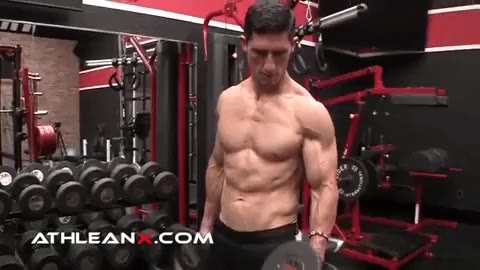
HOW TO DO THE HAMMER CURL:
- Begin by standing with your feet shoulder-width apart, ensuring a stable foot position.
- Keep your bicep head components in a neutral head position.
- Engage your core muscles to stabilize your torso throughout the movement.
- Hold a pair of dumbbells with a neutral grip, palms facing your torso.
- Ensure your elbows stay fixed by your sides throughout the movement to focus the effort on the biceps brachii.
- Slowly curl the weights upward, focusing on the activity of biceps brachii. Ensure the movement is controlled and avoid any swinging motions.
- Bring the dumbbells to shoulder height, maintaining the extended position for a moment to maximize muscle contraction and time under tension.
- Gradually lower the dumbbells back to the starting position, resisting the urge to let gravity do the work. This controlled descent is needed for building muscle and improving injury resilience.
WHAT MAKES IT EFFECTIVE: The Hammer Curl is effective because it engages the biceps brachii, brachialis, and brachioradialis muscles, promoting balanced arm development and increasing grip strength, while the neutral grip position reduces stress on the wrist and elbow joints, minimizing the risk of injury.
HAMMER CURL VARIATIONS
Now that we’ve covered how to perform the Hammer Curl, there’s something else that we need to discuss about this exercise.
As I mentioned above, the Hammer Curl is great for building up the brachialis to push it outward and give you more arm size, BUT…
Many people don’t perform the exercise properly, so it doesn’t lead to real growth for wider, thicker arms!
The Hammer Curl can be a good exercise for the brachialis, but the standard variation isn’t the best for targeting this muscle.
A standard Hammer Curl can fall short for targeting the brachialis because introducing any supination (palm up) during the elbow bend shifts the emphasis to the bicep heads, reducing the brachialis engagement.
The Hammer Curl uses a neutral grip, positioning your palms to face each other and your knuckles pointing forward, halfway between a fully supinated (palm up) and pronated (palm down) position.
This setup gives you some bicep activation during elbow flexion, meaning your brachialis isn’t kicking in as much as it could.
So, how do we turn off the biceps muscle activation a bit more?
You can try these common Hammer Curl variations. The first one is called the Crossbody Hammer Curl:
CROSSBODY HAMMER CURL


HOW TO DO THE CROSSBODY HAMMER CURL:
- Position your feet shoulder-width apart and grasp a dumbbell in each hand, ensuring your palms are facing each other in a neutral grip.
- Unlike traditional Hammer Curls, you’ll want to take your forearm out of supination. Begin by folding your arm across your chest, pronating the forearm so your knuckles are pointed slightly inward.
- Be sure to keep your elbow close to your body and stationary while flexing the elbow to lift the dumbbell up towards your opposite shoulder. Focus on moving the weight in a controlled manner.
- Once the dumbbell reaches your shoulder or chest level, pause briefly to maximize muscle contraction, and ensure the brachialis is fully engaged.
- Slowly extend your elbow to lower the dumbbell back to the starting position. Maintain control throughout the movement, resisting the urge to let gravity take over.
- Complete the desired number of repetitions on one side before switching to the other arm.
WHAT MAKES IT EFFECTIVE: We want to take ourselves out of supination and into pronation to really fire up that brachialis. Rather than maintaining a neutral hand position with knuckles facing forward, bring your arm across your chest and rotate your forearm inward to perform a Crossbody Hammer Curl. This will ignite the brachialis while minimizing the biceps’ contribution to the movement. This is the absolute best way to focus much of the effort on the brachialis and help really create that muscle growth over time!
DROP CURL

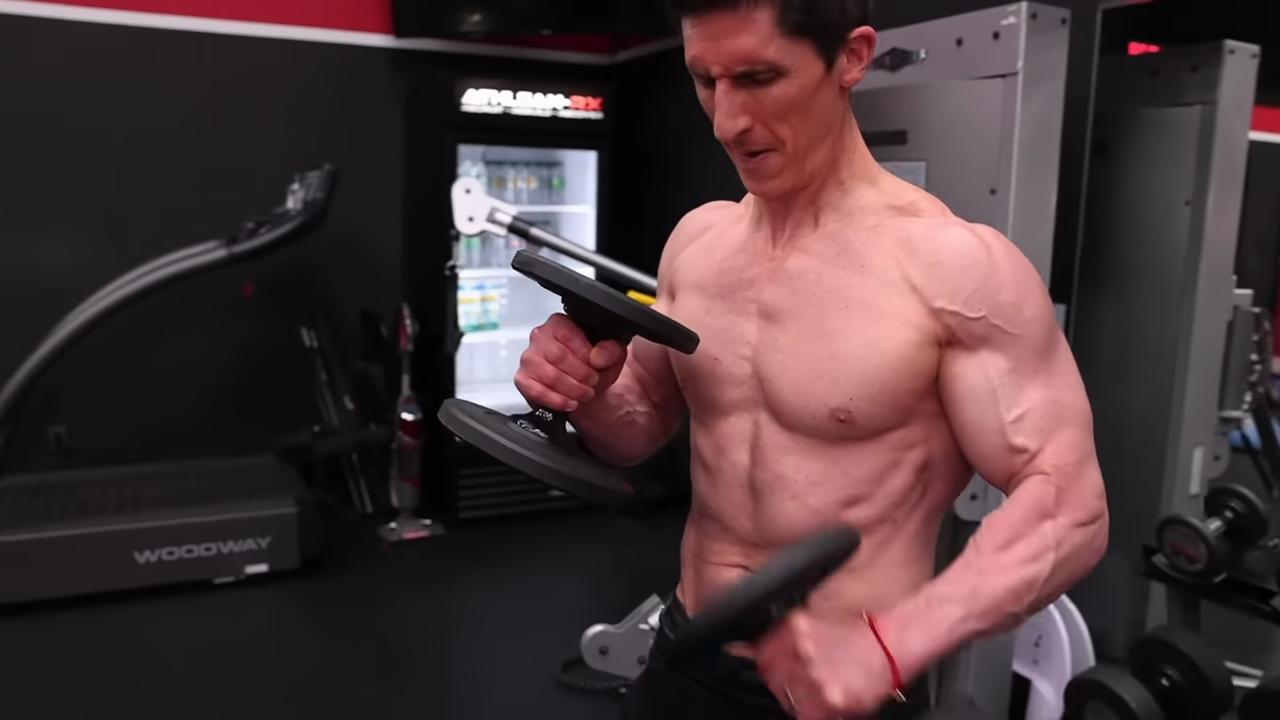
HOW TO DO THE DROP CURL:
- Stand with your feet set at shoulder-width and a dumbbell secured in each hand.
- Lift both dumbbells to chest level, keeping your elbows close to your body and the dumbbells in a neutral grip (palms facing each other).
- Slowly lower one dumbbell, focusing on a very slow and controlled motion. Aim to descend the dumbbell in a manner that takes more time than a standard curl.
- Keep the other dumbbell stationary at chest height while the working arm descends.
- Once the lowered dumbbell reaches the bottom of the curl, bring it back up to chest level in a controlled manner. Then, repeat the same slow descent with the other arm, keeping the first dumbbell stationary at chest height.
- Maintain a very slow pace, especially in the first half of the curl. This ensures the brachialis does most of the work. Avoid letting the biceps take over by stopping just past the 90-degree mark of elbow flexion.
WHAT MAKES IT EFFECTIVE: To keep the tension on the brachialis, hold the “non-working” dumbbell in the midrange position. Alternate lowering one dumbbell at a time while keeping your hand facing down or slightly downward. This minimizes biceps involvement and maximizes brachialis activation.
HAMMER CURLS COMMON MISTAKES
When it comes to Hammer Curls, nailing the proper form is essential to maximizing your gains and preventing injuries.
Here are some common mistakes to avoid, ensuring you’re getting the most out of this powerful arm curl exercise.
USING TOO MUCH WEIGHT
One of the most frequent curl mistakes is opting for the heaviest weight you can lift.
While it might feel impressive, using too much weight can compromise your form, leading to poor coordination of the biceps brachii and increased risk of arm injuries.
Instead, focus on a weight that allows you to perform the movement with proper technique, gradually increasing as your biceps strength improves.
INCORRECT ELBOW MOVEMENT
Proper elbow movement is key in hammer curls. Many people allow their elbows to drift forward or outward, reducing the effectiveness of the exercise.
Keep your elbows close to your body to engage the forearm brachioradialis muscle and strong elbow flexor muscles effectively.
This helps to build resistance to injury and ensures your muscles are worked through the correct range of motion.
NEGLECTING NEUTRAL-GRIP MOVEMENTS
Hammer Curls are all about the neutral grip, which targets the brachialis and the forearm muscles differently than Standard Bicep Curls or Traditional Bicep Curls.
Avoid supinating your wrists during the curl and maintain that neutral grip to engage the intended muscles.
For variation, try Neutral Grip Dumbbell Curls and Resistance Band Hammer Curls.
POOR BODY POSITION
Your body position plays a crucial role in the effectiveness of hammer curls. Avoid swaying or using momentum to lift the weights.
Maintain a sturdy position with your feet shoulder-width apart and engage your core to stabilize your body.
Using an adjustable weight bench for Incline Hammer Curls can help ensure a proper body position and reduce the likelihood of form breakdown.
INCONSISTENT TRAINING TECHNIQUES
Consistency in your strength training moves is essential. Don’t rely solely on the Standard Hammer Curl exercise.
Incorporate Hammer Curl alternatives like Rope Cable Hammer Curls and movements without weight, such as resistance band exercises, to keep your muscles guessing and prevent time to fatigue.
IGNORING THE ROLE OF ELBOW FLEXORS
Hammer Curls not only target the biceps but also the strongest flexor muscles in your elbow.
These strong elbow flexor muscles are crucial for overall arm strength and functionality.
Make sure you’re not just focusing on the aesthetics but also building these essential support muscles.
SKIPPING WARM-UPS AND COOL-DOWNS
Jumping straight into heavy lifts without preparing your muscles can lead to arm injuries.
Warm up with lighter weights or body weight exercises to prepare your tissues during times of high stress.
Similarly, cooling down helps in recovery and reduces the risk of injury.
FOCUSING ONLY ON HAMMER CURLS
While Hammer Curls are excellent, they should be part of a broader arm workout routine.
Include other arm curl exercises like Standard Bicep Curls, Traditional Bicep Curls, and Rope Cable Hammer Curls.
This comprehensive approach ensures balanced development and improves resistance to injury.
There you have it, guys – A complete breakdown of the Hammer Curl.
As I mentioned, while this is a great exercise, it’s not the end-all, be-all for developing bigger biceps.
To really grow those biceps, you should incorporate Hammer Curl variations like the Crossbody Hammer Curl into your program.
Don’t have a fully fleshed out program that can help you achieve the next shirt size? We can help! Check out our ATHLEAN-X programs to see which is the best fit for your goals and fitness level.

- The Hammer Curl, utilizing a neutral grip, effectively engages the brachioradialis muscle, a key muscle in your forearm, and improves wrist stability.
- To perform the standard Hammer Curl, do the following:
- Begin by standing with your feet shoulder-width apart, ensuring a stable foot position. This squat position will give you a sturdier base and better stability throughout the movement.
- Engage your core muscles to stabilize your torso. This will help you maintain a fixed position, preventing any unwanted torso movement that could lead to injury.
- Hold a pair of dumbbells with a neutral grip, palms facing your torso. This neutral grip movement is key for targeting the brachialis and brachioradialis muscles effectively.
- Ensure your elbows stay fixed by your sides throughout the movement to isolate the biceps brachii. This isolation is necessary for maximizing muscle activation and avoiding common errors.
- Slowly curl the weights upward, focusing on the activity of the biceps brachii. Make sure the movement is controlled and avoid any swinging motions to ensure proper form and reduce the risk of injury.
- Bring the dumbbells up to shoulder height, maintaining the extended position for a moment. This maximizes muscle contraction and time under tension, which is vital for muscle growth.
- Gradually lower the dumbbells back to the starting position, resisting the urge to let gravity do the work. This controlled descent is crucial for building muscle, improving injury resilience, and enhancing overall strength.
HOW TO DO HAMMER CURLS FAQS
Hammer Curls are a powerhouse move in any effective training program. Let’s break down which muscles you’re hitting with this exercise.
Biceps Brachii: Hammer Curls target both heads of the biceps brachii muscle in a neutral grip position, keeping the muscle under tension for a longer period of time.
Brachialis: This muscle, located beneath the biceps, is the main focus during Hammer Curls. The isolated position and neutral grip maximize brachialis activation, building arm thickness.
Brachioradialis: Running along your forearm position, this muscle is heavily engaged, improving grip time and forearm stability.
Forearm Muscles: Various forearm muscles are worked due to the grip and range of motion, enhancing grip strength.
Stabilizers: Core and shoulder muscles stabilizers work to maintain stability, preventing swinging motions and ensuring proper form.
Hammer Curls mimic natural movement patterns, making them functional and beneficial for everyday activities. The power movements involved make them essential in any strength training regimen.
Alright, let’s nail down the proper form for Hammer Curls to maximize your arm strength and muscle-building potential while minimizing the risk of injury. Here's your detailed step by step guide:
- Stand with your feet shoulder-width apart for stability. Maintain a neutral head and neck position to avoid strain.
- Hold a pair of dumbbells with a neutral-grip position, palms facing your torso. This is needed for targeting the brachioradialis and maintaining a neutral wrist position.
- Activate your core muscles to stabilize your torso, preventing any swing motions that can detract from the exercise.
- Keep your elbows in a fixed position by your sides. This isolated position ensures the activity of the biceps brachii and elbow flexor muscles.
- Slowly curl the weights upward, focusing on the muscle activation pattern of your biceps and brachialis. Avoid quick movements; controlled motion is key.
- Bring the dumbbells up to shoulder height, holding the extended position briefly to maximize contraction and time under tension.
- Gradually lower the dumbbells back to the starting position, ensuring a controlled descent to enhance muscle growth and injury resilience.
Here are some tips for success:
Weight Selection: Start with a light weight to perfect your form. Gradually progress to moderate weight and eventually heavy weights as your strength improves.
Avoid Lazy Position: Keep your muscles engaged throughout the entire movement to prevent falling into a lazy position.
Elbow Stability: Maintain elbow stability to reduce the risk for injury and improve overall arm strength.
Hammer Curls are a must-have in any effective strength training regimen. Here’s why:
Balanced Muscle Development: Hammer Curls target the biceps brachii, brachialis, and brachioradialis, promoting balanced growth and increasing overall upper arm muscle size and strength.
Grip Strength: The neutral-grip position enhances grip time and forearm strength, crucial for lifting heavy weights and performing compound exercises.
Easy on the Joints: The neutral wrist position reduces stress on the elbow joint and shoulder joint, minimizing the risk of shoulder pain and forearm pain.
Versatility: This single-joint movement can be performed with dumbbells, resistance bands, or cable machines with a rope attachment, fitting seamlessly into any arm workout.
Improved Muscle Activation: Holding the weights in a fixed position maximizes the activity of the biceps brachii and brachialis, ensuring effective muscle activation patterns and increased muscle building potential.
Stability and Control: Engaging core muscles and maintaining a neutral head position improves overall body stability and control, preventing swing motions and enhancing exercise effectiveness.
Functional Strength: Hammer Curls mimic natural movement patterns, making them beneficial for everyday movements and increasing your feats of strength.
Absolutely, Hammer Curls can make your arms bigger!
Hammer Curls target the biceps brachii, brachialis, and brachioradialis, promoting balanced growth across your upper arm muscles.
Using a neutral-grip position enhances grip strength and reduces the risk of forearm and shoulder pain, making it a joint-friendly exercise.
This single-joint movement maximizes muscle activation patterns, ensuring your biceps and forearms are thoroughly worked.
Incorporating Hammer Curls into your strength training regimen—whether with dumbbells, resistance bands, or cable machines with a rope attachment—can significantly increase your curling strength and upper body strength.
Start with a light weight and progress to heavier weights to continuously challenge your muscles. By maintaining proper form and engaging your core muscles, you’ll prevent swinging motions and effectively enhance muscle growth.
Over time, consistent Hammer Curls in your workout routine will lead to increased arm size, improved muscle-building potential, and stronger biceps.
While Hammer Curls are great for building arm strength and size, doing them every day isn't recommended.
Your muscles need time to recover and grow, so it's best to incorporate hammer curls into your routine 2-3 times a week.
Overdoing it can lead to overuse injuries, such as forearm pain or elbow joint issues.
Instead, follow a balanced strength training regimen that includes a variety of exercises targeting different muscle groups.
This allows for proper recovery time and maximizes muscle-building potential.
Focus on maintaining proper form, using a range of weights—from light weight to heavy weights—to keep challenging your muscles.
Remember, quality over quantity is key for optimal muscle growth and injury prevention.
Hammer Curls primarily target the brachioradialis, a key muscle in your forearm that enhances grip strength and forearm size.
By using a neutral-grip position, hammer curls also engage the biceps brachii and brachialis muscle, promoting balanced arm development and upper body strength.
This exercise is excellent for improving elbow stability and reducing the risk of forearm and shoulder pain.
Incorporate Hammer Curls into your strength training program with a variety of weights, from light weight to heavy weights, to maximize muscle activation and growth.
Proper form and controlled movements are crucial to avoid injury and ensure effective muscle building.
REFERENCES

Jeff Cavaliere M.S.P.T, CSCS
Jeff Cavaliere is a Physical Therapist, Strength Coach and creator of the ATHLEAN-X Training Programs and ATHLEAN-Rx Supplements. He has a Masters in Physical Therapy (MSPT) and has worked as Head Physical Therapist for the New York Mets, as well as training many elite professional athletes in Major League Baseball, NFL, MMA and professional wrestling. His programs produce “next level” achievements in muscle size, strength and performance for professional athletes and anyone looking to build a muscular athletic physique.
















